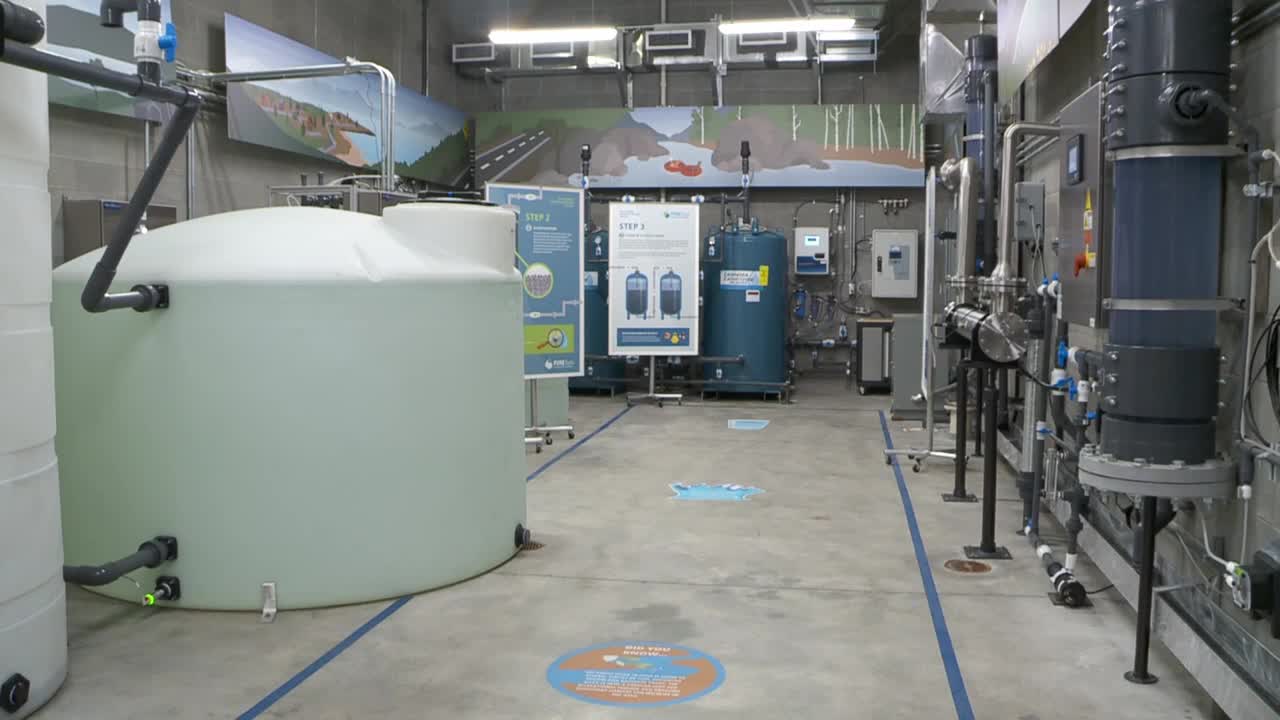SOUTH JORDAN, Utah — The wastewater moves through a series of filters before it emerges out of the tap ready to drink.
"Tastes like water," quipped South Jordan Mayor Dawn Ramsey.
It's called "Pure SoJo." It's a pilot project in water re-use by the city of South Jordan in an effort to help stretch supplies a little further by turning wastewater into drinking water. South Jordan does not have its own native water supply (groundwater systems are still being cleaned up from decades of mining in the area before it was really developed).
"We purchase 100% of our water from the Jordan Valley Water Conservancy District," said Mayor Ramsey.
The need for water has forced South Jordan to consider ideas like Pure SoJo and to get aggressive about water conservation. The city council recently updated ordinances to aggressively push water-wise landscaping in residential and commercial use. The city also offers residents incentives and rebates for efforts they make to save water.
"As we continue to grow — we’re one of the 10 fastest growing cities in America — as Utah continues to grow and the West continues to get drier, we think it’s time to think broader about our water resources," the mayor told FOX 13 News.
Pure SoJo is so new, there aren't really specific regulations surrounding it. So the city has also partnered with the University of Utah and Utah's Department of Environmental Quality to do research and provide oversight. The water it generates is not made available for public consumption yet. Instead, it is pumped back into the Jordan River as they continue to refine things.
But South Jordan city officials have been pleased with the results so far.
"It’s going great," said Ray Garrison, South Jordan's public works director. "I’ll tell you we have seen the results of this plant and working with the Division of Drinking Water, it's proven technology and it's done what we've said it would do."
South Jordan's overall efforts on water conservation are being praised by state water conservation officials. Tage Flint, the director of Utah Water Ways, the state's conservation program, said there are still a lot of communities across the state that have yet to adopt water conservation ordinances.
"We're running around 35% of the cities in Utah now have some sort of water conservation ordinance," he told FOX 13 News.
When the Great Salt Lake hit a historic low in 2022, residents cut their use and rallied around conservation. This year, local water districts reported a 10-15% increase in use over last year leaving many water managers frustrated as Utah slipped deeper into drought.
It's that issue that has prompted Utah Water Ways to start pushing municipal governments across the state to pass ordinances — and aggressive ones at that. Flint said some city councils are reluctant because they fear resident pushback.
"It's very important because so much of our water is still used outdoors, in the urban setting on landscapes," Flint said. "It's where we can actually make a difference. Through ordinances and through requirements, having a landscape that just uses so much less water."
Mayor Ramsey said she has not heard many complaints from her constituents.
"People have been very supportive of this. Our residents appreciate it, they’re grateful for it. I think most people want to do the right thing they just need to understand what that looks like and how it can be done," she said.
If the Pure SoJo pilot project is successful in a couple of years, South Jordan may explore an expansion. That could cost millions of dollars, but Mayor Ramsey said it could help her community. Water re-use in the Great Salt Lake Basin is generally frowned upon because it can impact the lake. South Jordan city officials said Pure SoJo has been studied and not found to adversely impact the lake because it is keeping more water in reservoirs. In southern Utah, communities are looking to beef up their water re-use to stretch Colorado River water supplies.
"We live in a desert and it’s important for us to realize we can’t create more water and we need to each do our part and we can each do our part," Mayor Ramsey said.
This article is published through the Great Salt Lake Collaborative, a solutions journalism initiative that partners news, education and media organizations to help inform people about the plight of the Great Salt Lake—and what can be done to make a difference before it is too late. Read all of our stories at greatsaltlakenews.org.




